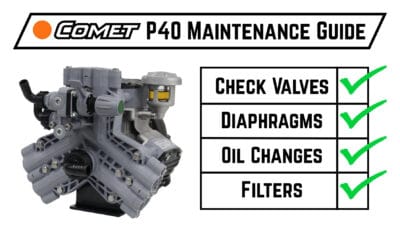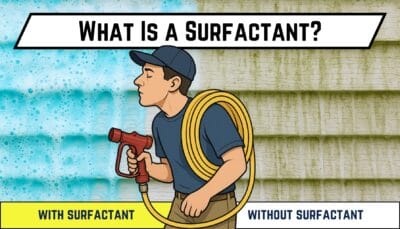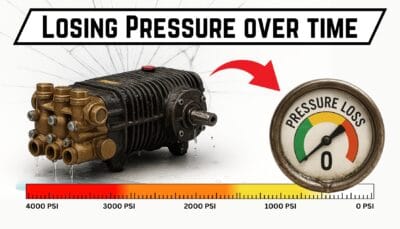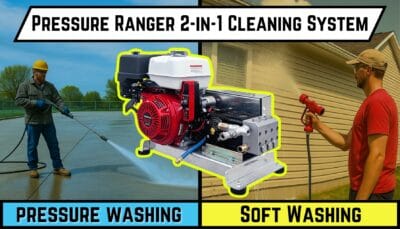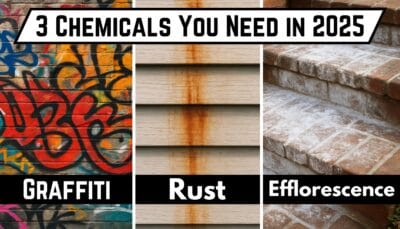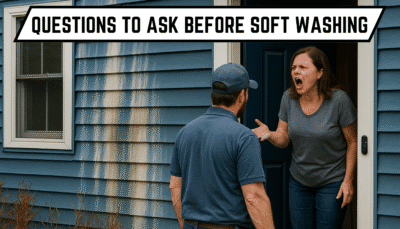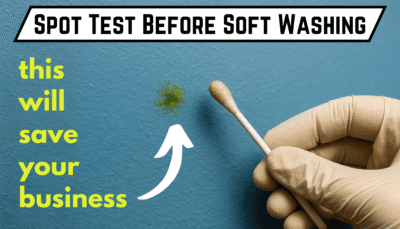Why Your Pressure Washer Is Losing Pressure Over Time
- Posted by: Collin Steele
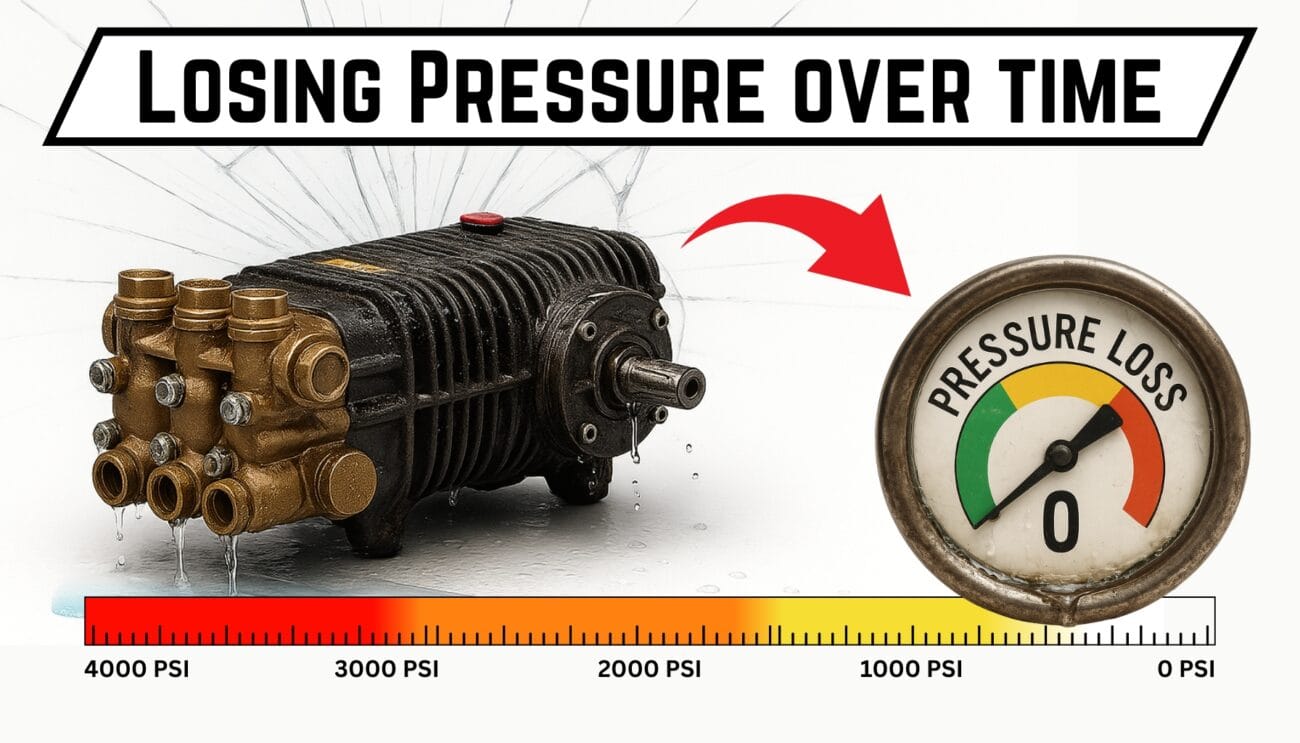
I sat down with Ryan from Pressure Washers USA to talk about something every pressure washing pro runs into at some point: pressure washer losing pressure over time.
That’s one of the most common issues in the industry and according to Ryan, pressure loss is a normal part of a pressure washer’s lifespan because pumps do wear out. But the good news is you can spot the signs early, prevent wear and damage, and know when it’s time to repair or replace.
In this article, I’ll break down what we talked about so you know why pressure loss happens, what parts usually fail, and how to keep your system in better shape.
What Fails and How to Prevent It
There are a few parts inside your pressure washer pump that take most of the beating. Over time all that water, heat, and vibration wears things down and once these parts start to go bad, that’s when you’ll notice your pressure dropping.
Seals and packings

These are usually some of the first parts to wear out. They keep water sealed inside the pump, allowing it to build up pressure, and when they go bad you’ll usually see water dripping from the pump head. That’s when you know the seals or packings need to be changed. If you keep running the machine with bad seals it can lead to more serious internal wear and even water getting into places it shouldn’t.
Best practice: Don’t let your machine run too long without pulling the trigger. If you’re using a bypass system, running it dry heats up the pump fast and breaks down the seals quicker. If you’re stepping away for more than a couple minutes just shut the machine off.
Check valves

Even if there’s no leak the pressure might pulse or feel off and that’s often a check valve problem. They keep water moving through the pump in one direction, but if dirt, sand, or chemical buildup gets in there, they stop working like they should. A clogged or worn valve can mess with flow and make your machine feel weak or unstable.
Best practice: Use an inline filter to keep debris out of your water line. If you’re pulling from a tank, make sure that tank stays clean too. Sediment settles at the bottom and without a filter it’ll get pulled straight into the system and wear your check valves down fast.
Unloader valve

Let’s say you already replaced the seals and the check valves but the pressure’s still weak. It might be your unloader. A lot of guys forget this part but unloaders wear out too. If it sticks open or leaks internally, the system won’t build proper pressure, no matter what else you fix. Some unloaders can be rebuilt, others need to be replaced.
Best practice: Make the unloader part of your troubleshooting process. If everything else checks out but pressure still drops, test or swap the unloader next. And avoid letting the system run idle for too long as bypass heat also takes a toll on unloaders over time.
Pump pistons and head

After enough use, the pistons in your triplex pump can develop cracks/wear or get loose. The pump head can wear down, especially under high pressure or chemical exposure. If you open up the pump and the pistons feel wobbly, the bearings or piston guides are likely worn out. This kind of damage typically starts gradual but can get out of hand quickly if left unchecked.
Best practice: Keep the system from overheating. Heat and friction is what kills pistons and bearings. Make sure your oil is clean for lubrication, and avoid long idle times of trigger.
Oil

Don’t forget about the oil. Oil keeps your pump parts moving the way they should. But if the oil breaks down or gets contaminated, it can’t do its job. Using motor oil or letting the oil go too long without a change will wear your pump out from the inside. You might not notice right away but you’ll feel it over time in weaker pressure, louder operation, or total failure.
Best practice: Use 30-weight non-detergent pump oil or whatever is recommended by your specific manufacturer. Never use cooking oil, motor oil, or anything else not made for pumps. Check it regularly and change it when it starts looking dark or cloudy. If you’re using your machine often, don’t wait for something to go wrong. You can build oil checks into your routine and treat it like fuel. Clean oil = longer life.
If you have a gearbox: Some pressure washers/soft washers have a gear drive system instead of direct drive. If that’s the case, your gearbox needs its own oil too. Most setups use 90-weight gear lube. Gear oil is separate from pump oil, so make sure you’re checking both if your machine has a gearbox.
Other tips that help
Keep your tanks clean: If you’re pulling water from a tank especially on job sites, that tank can build up dirt and grit over time. Junk settles at the bottom and can get pulled into your pump if you’re not filtering it. A clean tank helps protect your check valves, seals, and other parts from early wear.
Listen to your machine: If it sounds off, it probably is. Most issues start small before they turn into a breakdown, so trust your ears and check things early.
Your pressure washer losing pressure is normal but maintenance makes all the difference. Pumps wear out over time and that’s just part of the game but staying ahead with simple habits like checking your oil, cleaning your tanks, and catching small issues early can help your setup last way longer.
Take care of your equipment, and it’ll take care of you.
If you prefer to watch the video version of this article, you can go and watch it here: Why Your Pressure Washer Is Losing Pressure (And How to Fix It)
Latest Blog Posts
If you’ve been soft washing for a while, or even if you’re just starting out, you’ve probably heard the word
...

